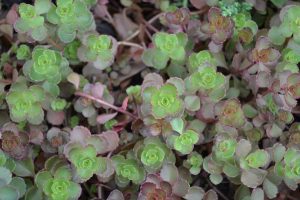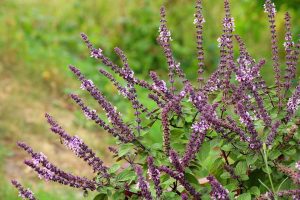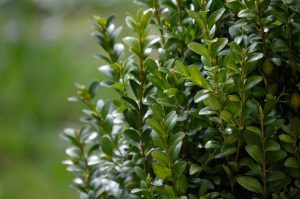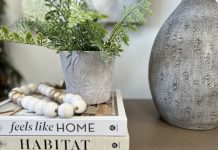 It’s finally one of my favorite weekends of the year: planting weekend! I haven’t been gardening for very long and I’m a pregnant mom who also works full-time, so I don’t have the time or energy to take care of an extensive garden. But I do have a few plants in my yard and before getting started a couple years ago, I did quite a bit of research before digging the first hole in the ground.
It’s finally one of my favorite weekends of the year: planting weekend! I haven’t been gardening for very long and I’m a pregnant mom who also works full-time, so I don’t have the time or energy to take care of an extensive garden. But I do have a few plants in my yard and before getting started a couple years ago, I did quite a bit of research before digging the first hole in the ground.
I knew one very important thing before I got started: I was going to need plants that could survive mostly on their own. I had led my share of houseplants to an early demise by forgetting to water them and was honestly a little nervous to put something in my front yard for the whole neighborhood to witness me forget about and murder. This is what led me to extensively research hardy plants that might survive the East Tennessee clay soil we had at our first home. Since then, we have also lived in an apartment with a mostly shaded balcony where I kept several plants, and now in a new construction home where the soil is softer and more recently turned up.
My criteria for plants included that they be perennial, so I didn’t have to replant year after year, do well in our zone, and mostly survive on their own. This meant that a lot of what I planted had more of a bushy/shrub look to it, since a lot of the flowers are annuals. However, most of these flower at least once per year and are lovely! You also can create a good amount of color and variety in your garden with non-flowery plants, as I’ve learned.
Ok, here’s the information and advice I’ve gathered over the last few years; don’t get upset if I don’t know all the proper terminology because honestly, I’m still a bit of a beginner too! Also, none of this is about vegetables. I mostly killed a whole raised bed of veggie plants when I tried that in 2020. Most of my knowledge I have gratefully absorbed from the Knoxville Area Gardening Tips group on Facebook, along with advice from family and neighbors. (Gardening is such a great way to connect with your neighborhood!) Anyways, here we go.
What you probably want to know before starting:
- Your zone: We’re in Zone 7!
- What time of year to plant: For new plants, I always wait until the weekend closest to May 15th in order to avoid the last frost. A couple of years ago, I got too eager, planted a whole trunk-load of plants around May 7th, and then we had a late Mother’s Day weekend frost that mostly killed everything. Goodbye dollars, goodbye plants.
- How much sun your planting area gets: Are you doing a garden in full sun? Morning or afternoon sun? Mostly shade? There’s a plant for that.
- How much water your yard gets: Are you on a slope with runoff? Does your soil drain properly? We get a good amount of summer rain here, but it gets hot enough in July and August that you’ll probably have to give your plants a drink now and then.
- What kind of soil you have: When I had mostly clay soil, I had to find plants that could handle some clay, but I also “amended” (hello new vocab!) my dirt with garden soil and a little fertilizer. It’s also recommended that you have your soil tested if you’re unsure what you have. Did you know that the University of Tennessee Institute of Agriculture will do that for you? What a cool local resource!
- Native or non-native: It’s worth considering whether you want to grow plants native to our area. Native plants will have a better chance of surviving and be beneficial for the wildlife too! If you choose some non-natives for your garden, check if they are considered an “invasive species” that will take over your yard, choke out your other plants, or be harmful to our wildlife. For example, never plant English Ivy. It will take over your entire yard, and you’ll spend the rest of your days trying to pull it up. And you might not want to plant something like Nandina, which looks pretty, but is invasive and the attractive red berries are toxic to animals.
Now that we’ve gone over some “ground rules” (pun intended!), let’s take a look at which plants have become my go-to:
- Hosta: Buy it from the store or get it from someone else! Hosta grows and spreads, and it’s easy to dig up a few clumps to share with a friend. You can choose dark green, variegated, or somewhere in between. Hosta is sold as a partial sun plant, so it can do well in sun or shade! Shoots out tall flower stalks for a short time. Dies back and returns year after year.

- Clematis: A climbing, flowering plant, this is one of my favorites! Choose a trellis, choose a color, and watch it explode with flowers. Flower colors range from white to varying pinks and purples, and you can even mix and match. The roots of the clematis like extra cover from the sun, so I pile a little extra mulch over the base. Some people cover the planted area with pretty pottery for decoration! It will die back in the winter and come back in the spring.

- Salvia: Salvia has a slightly feathery look to the leaves and shoots out beautiful purple flowering stems. It can get a little leggy if not trimmed back. Dies down in the winter and comes back in the spring.
- Boxwood: This is your evergreen and helps keep a little color in your yard through the winter. It will grow a little each year, and you can shape and trim it however you want. Grow them a little closer together if you eventually want a solid hedge! Does not die back in the winter and will resume new growth in the spring.
- Sedum: Sedum is a sweet little groundcover. It comes in many varieties, and some need more shade than others. Find one that doesn’t grow so quickly that it takes over your whole area, unless that’s what you want! Good for adding low-level interest in your garden area. Will die back in the winter and come back in the spring.
 Ok, that’s pretty much what I can offer for beginners! One final consideration might be whether to buy from a local nursery or a big box store. I do both, but there is something special about buying from one of our local nurseries. The people who work there tend to be pretty knowledgeable about the plants, our zone, soil, etc. Plus, it’s a fun way to interact with other gardeners! At our Oak Ridge nursery, Willow Ridge, they even have large koi ponds where the kids can feed the fish. My son loves the whole gardening experience, from choosing the plants, to helping dig in the dirt and getting to water the plants with the hose or his little watering can.
Ok, that’s pretty much what I can offer for beginners! One final consideration might be whether to buy from a local nursery or a big box store. I do both, but there is something special about buying from one of our local nurseries. The people who work there tend to be pretty knowledgeable about the plants, our zone, soil, etc. Plus, it’s a fun way to interact with other gardeners! At our Oak Ridge nursery, Willow Ridge, they even have large koi ponds where the kids can feed the fish. My son loves the whole gardening experience, from choosing the plants, to helping dig in the dirt and getting to water the plants with the hose or his little watering can.




















